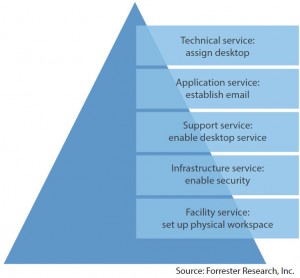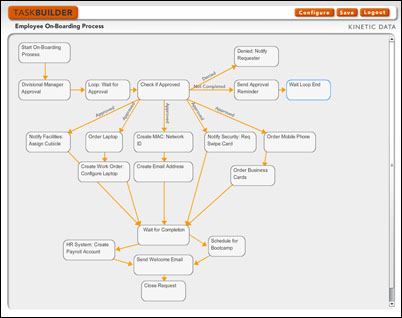The Evolution of the IT Service Catalog: Here’s What Comes Next
As a caterpillar turns into a butterfly through metamorphosis, so the IT service catalog is being transformed. It will emerge as a higher-level entity.
The concept of the IT service catalog isn’t going away but it is evolving. As a caterpillar turns into a butterfly through metamorphosis, so the IT service catalog is being transformed. It will emerge in forward-thinking organizations as a higher-level entity called the business service catalog.
That’s one of the core takeaways from Master the Service Catalog Solution Landscape in 2013, a Forrester Research white paper. Authors Eveline Oehrlich and Courtney Bartlett introduce the white paper by stating that, “The successful IT organization no longer just keeps the lights on—this organization enables the business to achieve organization-wide goals. To facilitate this shift, IT organizations must now focus on…delivery…of services rather than IT technologies. To do this you must have a service catalog.” But most current IT service catalogs, focused on descriptions of services IT offers to the business, are inadequate to this task.
As IT moves from a supplier of services to playing a more central role in driving business initiatives and success, its mission must shift from information technology (IT) to what Forrester terms “business technology” (BT). “The shift from IT to BT requires new models for how technology is delivered, operated, and supported. Services must be defined, and there is no right or wrong way to do this.”
Furthermore, per the authors, “Forrester believes services should be primarily defined from a customer point of view, or with a particular business outcome in mind. As IT moves from being a provider of technologies to a broker of services involving technology, a comprehensive service catalog becomes imperative for the health and future of the business.” In other words, the BT vision means extending the service catalog beyond IT to encompass services provided by departments and functions across the organization.

For example, the figure at right shows a simplified list of services associated with onboarding a new employee. Most of the services shown are provided by IT. The goal of employee onboarding, however, is to get new employees productive as quickly as possible; ideally, new employees would have everything they need in order to do their jobs at their fingertips on their first day. This holds not only for new employees, but for those transferred to a new role or new location as well.
The image below shows an example task tree for an employee onboarding process: not only the different departments involved (IT, facilities, HR, etc.) but also the multiple approvals and fulfillment actions required to fully provision a newly hired employee.

Forrester’s BT vision thus nicely correlates with the concept of enterprise request management (ERM). The business service catalog must be actionable (not merely defining services); it must extend beyond IT into services delivered by other functions (such as HR and facilities); and it must be capable of managing complex processes spanning multiple departments and business functions—while shielding the business user from that complexity.
Part two of this series will detail the benefits of undertaking a business service catalog initiative, and part three will outline the architectural requirements.



